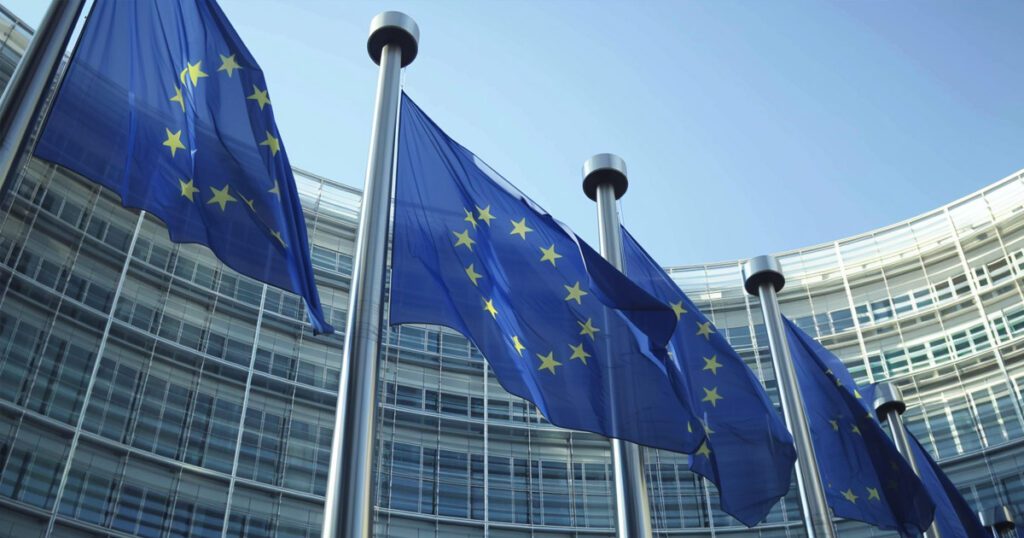

The following is a guest post from Anil Oncu, CEO of Bitpace.
Since its inception in 2020, the European Union’s Markets in Crypto Assets (MiCA) Regulation has shed new light on the European crypto industry. While many view the continent as a less important player, the new regulations have introduced a new narrative, in which Europe is blazing a new trail for crypto rather than lagging behind the US or Asia in terms of blockchain innovation. MiCA, and the standards it sets, could be the push companies need to deliver better products for everyone.
The implementation of these standards is not without obstacles. Earlier this month, Coinbase announced that it would remove stablecoins from unauthorized providers by the end of 2024 in order to be MiCA compliant. The delisting would affect assets like USDT, the largest stablecoin by current market capitalization. Tether’s response? A statement promising to introduce a “technology-enabled solution” to overcome MiCA compliance challenges.
This seemingly vague answer hints at something critical. Businesses can offer compliant solutions that are more secure, efficient and stable. They just haven’t done it yet. As the clock ticks on implementation, this is just the start of how MiCA will catalyze a better European crypto industry.
Is MiCA the new GDPR?
Emerging technologies and regulators often have a contentious relationship. Keeping up with constant change is a real challenge, and it is impossible to introduce effective regulation without consulting the industry.
MiCA closely parallels the introduction of the General Data Protection Regulation (GDPR) in 2016. In response to evolving digital advertising and internet practices, the GDPR set a global benchmark for data privacy, forcing companies around the world to comply with Europe’s rigorous standards or face tough penalties. . Despite initial skepticism, GDPR has become the de facto standard for data security. MiCA has the potential to do the same for cryptoassets.
The new framework could be a complete game-changer for the industry in the EU, with compliant stablecoins able to be provided to the entire EU crypto market, transcending the current disconnect between separate individual licenses in different countries. A trend toward compliance will likely emerge from other coins, leading to increased participation in cryptocurrencies across many industries.
Making sense of MiCA
Regulation and licensing are nothing new in the world of finance. Strict regulation and consumer protection are the foundation of today’s banking, payments and asset servicing. Thanks to its borderless and decentralized nature, Crypto is not subject to the same regulatory scrutiny. But this does not mean that legal considerations should be left aside.
MiCA stands out as one of the most comprehensive digital asset regulations to date. It aims to address some of the problems that harm crypto’s public reputation: crime, bad actors, and misinformation, among others. Under MiCA, crypto providers must inform investors about risks such as scams and volatility. It also encourages sustainability by requiring companies to disclose the environmental impact of their operations.
There are not many downsides to a more transparent and climate-conscious crypto sector. The same goes for MiCA’s Stablecoin regulations, but what took providers so long to make these changes?
More stable stablecoins
MiCA says stablecoin issuers must be fully transparent about their reserves in order to protect consumers and investors. This is a significant step forward for the stablecoin market, where issues of transparency and solvency often overshadow potential benefits. Regulation of stablecoin providers will force these in-depth questions to be answered.
Tether’s upcoming solution is a great example of MiCA-driven evolution. By focusing on a “technology-driven approach,” Tether likely aims to provide a safer, more sustainable, and more secure product than what exists in the European market today. This decision was not motivated by a sudden altruistic desire for improvement, but by the need to comply with the strict requirements of MiCA. Stablecoin providers have always had the potential to innovate. However, before MiCA, there was not enough regulatory pressure to push them in this direction.
Circle, the second largest stablecoin by market capitalization, has already answered the call and obtained a French e-money license in July 2024. The company has a strong compliance history. Its USDC reserves are collateralized by cash or bonds, and many consider its KYC and AML standards the gold standard. With MiCA, it is not just market competition that will prompt similar efforts from Tether. The regulations impose a “do or die” moment that will benefit the entire industry.
This idea of a more stable industry through tighter regulation means we could see more traditional businesses and industries participating in crypto services in the not too distant future. It has the potential to increase competitiveness by attracting investment, talent and businesses to the crypto sector, and become a huge opportunity for economic and technological progress for the EU.
MiCA goes global
MiCA paves the way for more effective regulation globally. Other regions may look to MiCA as a model for their own regulatory frameworks, just as they did with GDPR. The impact of this European regulation lies not only in its depth but also in its clarity. This stands in stark contrast to the United States’ fragmented regulatory attempts and sets a precedent for crypto companies to operate with confidence. If MiCA is successful, it will pave the way for global regulatory frameworks and can be replicated overseas in other jurisdictions.
MiCA sets the standard for cryptoasset regulation and from now on, the industry can evolve and grow in ways that were not possible before. As MiCA approaches its full effective date in 2026, we can expect to see more secure and reliable products emerge, paving the way for a more secure and sustainable crypto ecosystem in Europe and beyond.




